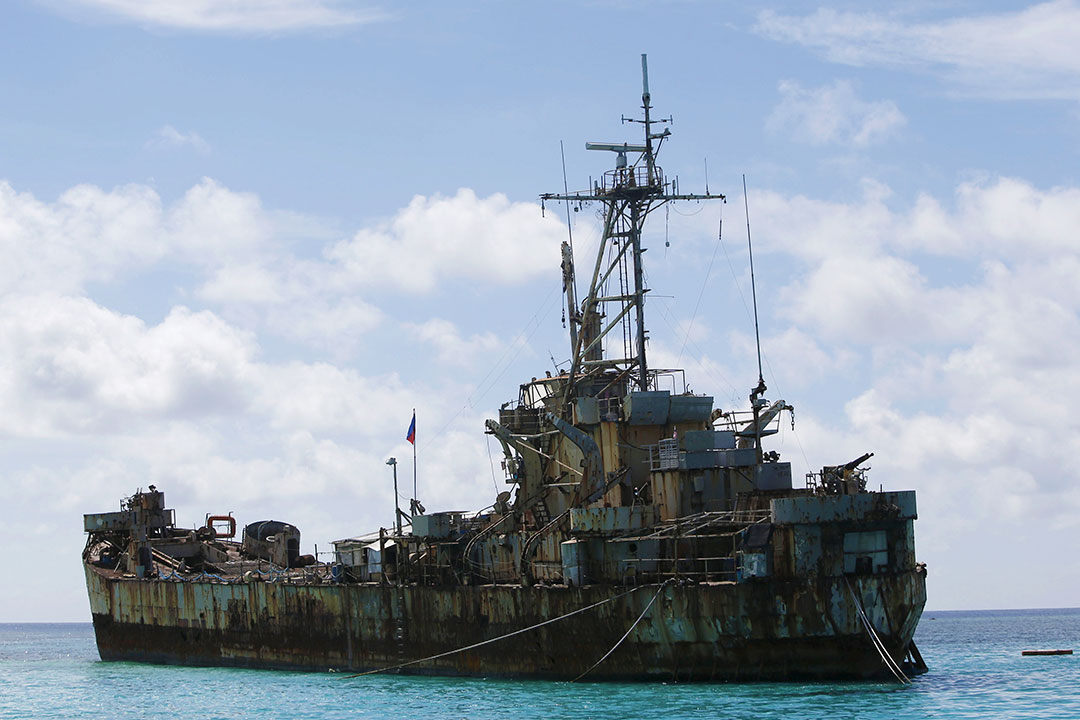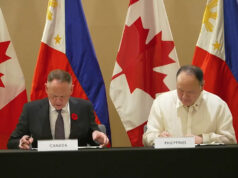Philippines, China agree to establish new phone lines to handle sea dispute

By John Victor D. Ordoñez, Reporter
THE PHILIPPINES and China have agreed to set up new lines of communication to improve their handling of sea disputes, according to Manila’s Foreign Affairs department, as ties sour over clashes between their coast guards in the South China Sea.
The parties have yet to finalize the guidelines on these communication channels, Philippine Foreign Affairs spokesperson Ma. Teresita C. Daza told BusinessWorld in a WhatsApp message on Wednesday.
She said top diplomats from Beijing and Manila started working on the improved communication lines during a bilateral consultation mechanism in Manila on July 2.
Both countries resumed talks to ease tensions in the South China Sea after accusing each other of raising tensions in disputed shoals and reefs in the waterway, including an incident where a Filipino navy sailor lost his thumb.
The bilateral consultation mechanism is a format to specifically address South China Sea issues.
The two countries have traded barbs over jurisdiction in the contested South China Sea as the Philippines, emboldened by support of defense ally the United States, challenges China’s presence around strategic features within Manila’s exclusive economic zone (EEZ).
Three communication channels would be set up for maritime issues, Reuters reported, citing an unnamed Philippine diplomat.
The first channel will be used by “representatives to be designated by their leaders,” and the second by their Foreign Ministries at the ministerial or vice-ministerial level, or their representatives.
The third will involve their coast guards, “which will be set up once the corresponding memorandum of understanding between the coast guards is concluded, according to a document.
The Department of Foreign Affairs (DFA) said Philippine Foreign Affairs Undersecretary Ma. Theresa P. Lazaro and Chinese Vice Foreign Minister Chen Xiaodong had a frank and constructive discussion on the South China Sea situation.
“Experience with hotlines to Beijing has been highly discouraging, as attempts by the Philippines and other countries have frequently resulted in unanswered calls,” Raymond M. Powell, a fellow at Stanford University’s Gordian Knot Center for National Security Innovation, said in an X message.
“The utility of this ‘upgraded’ line will depend entirely on whether the office at the far end is empowered and expected to actually answer the phone during a crisis,” he added.
NOT A ‘GAME CHANGER’
The Chinese Embassy in Manila did not immediately reply to a Viber message seeking comment.
The Philippines and Japan on July 8 signed a pact that eases entry of equipment and troops for combat training, saying they want stability in the region amid growing tensions with China.
“While Manila’s acknowledgment of this plan illustrates its continued commitment to dialogue, it has no reason to expect it to be a game changer for the West Philippine Sea,” Don McLain Gill, who teaches international relations at De La Salle University, said in a Facebook Messenger chat.
Philippine Defense Secretary Gilberto Eduardo C. Teodoro, Jr. earlier said China has yet to prove a “level of good faith” to engage in defense talks.
He earlier told senators that there won’t be any talks until “fundamental processes” are settled.
“In the past, Beijing ignored and took hotline diplomacy for granted,” Chester B. Cabalza, founding president of Manila-based International Development and Security Cooperation, said in a Facebook Messenger chat. “Manila should be firm to get this done better.”
The Philippines last month accused China’s coast guard of intentionally ramming and deliberately puncturing navy boats and seizing weapons to disrupt a resupply mission to troops stationed on a vessel grounded at the Second Thomas shoal, seriously injuring a Filipino sailor.
China said the Philippine vessel had illegally intruded on its territory and “deliberately and dangerously” approached a Chinese ship, resulting in a slight collision.
The agreement on communication channels is not the first, with the two sides having set up a line between their maritime offices before.
They agreed during the recent bilateral meeting on the need to “restore trust” and “rebuild confidence” to better manage disputes.
The Philippine resupply missions, often accompanied by media, have riled China, which sees Second Thomas Shoal as part of its territory, despite being 1,300 km off its mainland and within Manila’s EEZ.
Beijing maintains it has sovereignty over most of the South China Sea based on its old maps and has deployed hundreds of coast guard vessels deep into Southeast Asia to assert its claims, disrupting offshore energy and fishing activities of its neighbors including Malaysia and Vietnam.
China has refused to recognize a 2016 international arbitral ruling that voided its claims for being illegal.
The United States has backed the Philippines over the clashes, condemning what it calls Chinese aggression, while underlining its “ironclad” commitment to a 1951 Mutual Defense Treaty under which it must defend its former colony if attacked.
China has accused the United States of interference. — with Reuters



